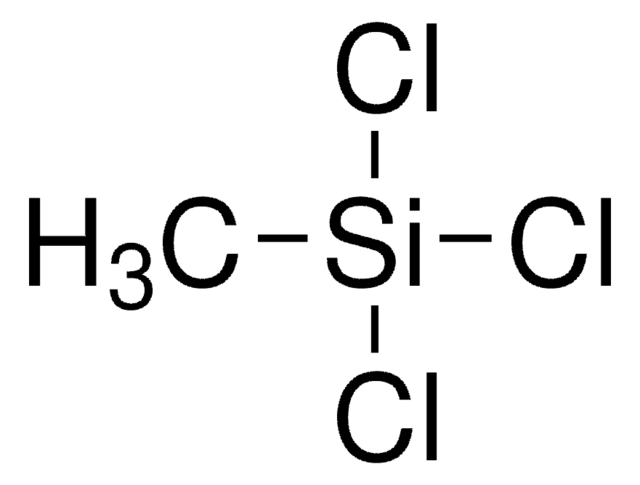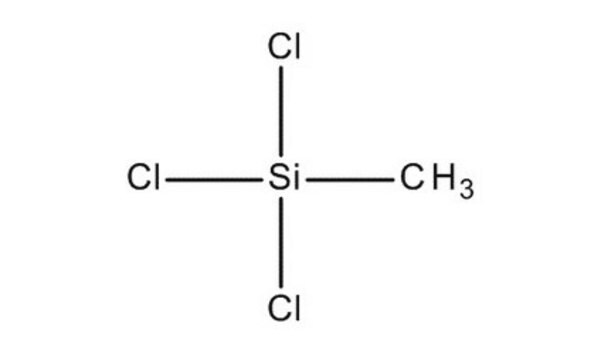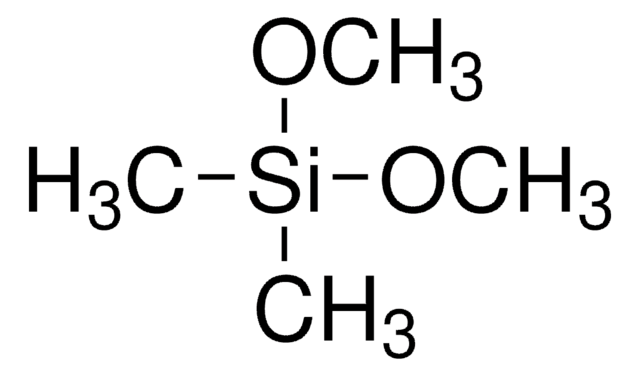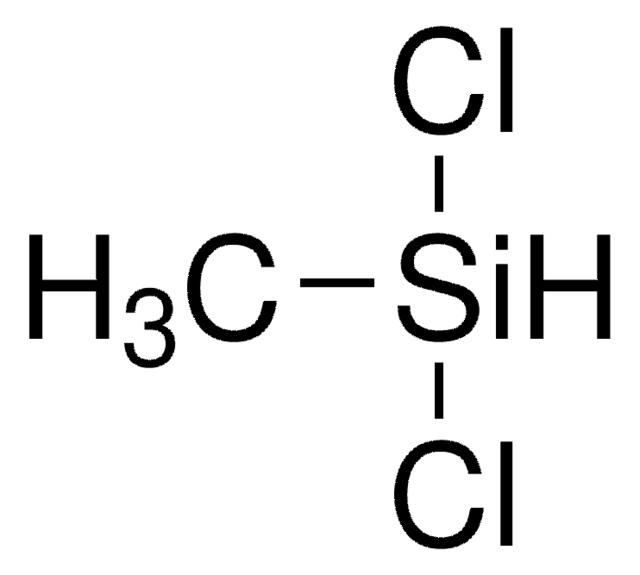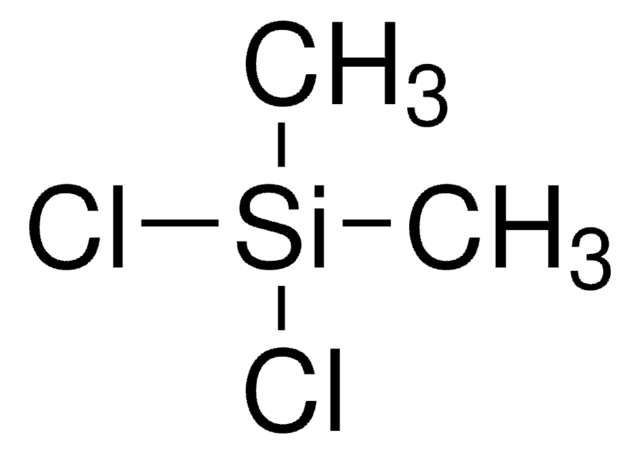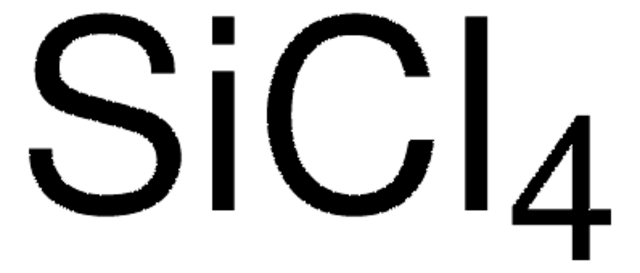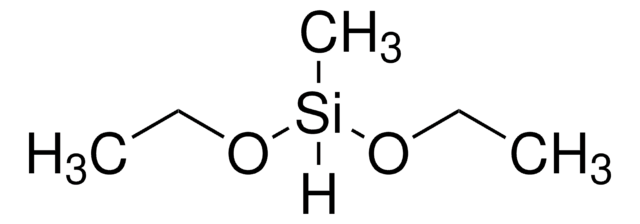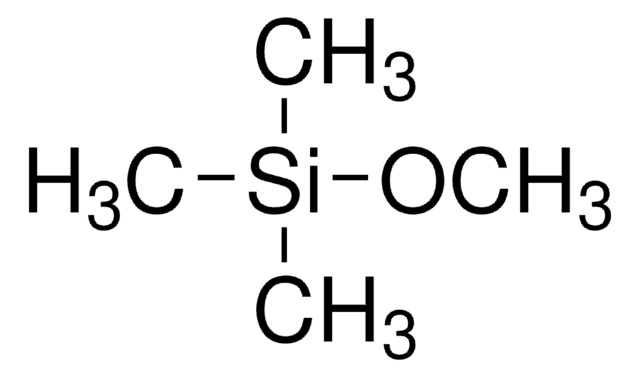Kluczowe dokumenty
679208
Methyltrichlorosilane
deposition grade, ≥98% (GC), ≥99.99% (as metals)
Synonim(y):
Trichloro(methyl)silane
About This Item
Polecane produkty
klasa czystości
deposition grade
Poziom jakości
gęstość pary
5.2 (vs air)
ciśnienie pary
150 mmHg ( 25 °C)
Próba
≥98% (GC)
≥99.99% (as metals)
Formularz
liquid
temp. samozapłonu
>760 °F
granice wybuchowości
11.9 %
współczynnik refrakcji
n20/D 1.411 (lit.)
bp
66 °C (lit.)
gęstość
1.273 g/mL at 25 °C (lit.)
ciąg SMILES
C[Si](Cl)(Cl)Cl
InChI
1S/CH3Cl3Si/c1-5(2,3)4/h1H3
Klucz InChI
JLUFWMXJHAVVNN-UHFFFAOYSA-N
Szukasz podobnych produktów? Odwiedź Przewodnik dotyczący porównywania produktów
Hasło ostrzegawcze
Danger
Zwroty wskazujące rodzaj zagrożenia
Zwroty wskazujące środki ostrożności
Klasyfikacja zagrożeń
Acute Tox. 3 Inhalation - Acute Tox. 4 Dermal - Acute Tox. 4 Oral - Eye Dam. 1 - Flam. Liq. 2 - Skin Corr. 1A - STOT SE 3
Organy docelowe
Respiratory system
Kod klasy składowania
3 - Flammable liquids
Klasa zagrożenia wodnego (WGK)
WGK 1
Temperatura zapłonu (°F)
46.4 °F - closed cup
Temperatura zapłonu (°C)
8 °C - closed cup
Wybierz jedną z najnowszych wersji:
Masz już ten produkt?
Dokumenty związane z niedawno zakupionymi produktami zostały zamieszczone w Bibliotece dokumentów.
Produkty
Chemia reaktywnych silikonów: Koncentracja na produkcji czystego krzemu, polimeryzacji i kontrolowanych reakcjach stereochemicznych.
atomic layer deposition (ALD), microelectronics, Mo:Al2O3 films, nanocomposite coating, photovoltaics, semiconductor devices, W:Al2O3 films, composite films, layer-by-layer
Silica is a very popular inorganic nanomaterial used in a wide range of applications including fillers for rubber, catalyst supports, separation media, carriers in food and agriculture, and abrasive/anticaking agents in cosmetics. It is also widely believed to be an important material for biomedical applications for following reasons.
Nasz zespół naukowców ma doświadczenie we wszystkich obszarach badań, w tym w naukach przyrodniczych, materiałoznawstwie, syntezie chemicznej, chromatografii, analityce i wielu innych dziedzinach.
Skontaktuj się z zespołem ds. pomocy technicznej